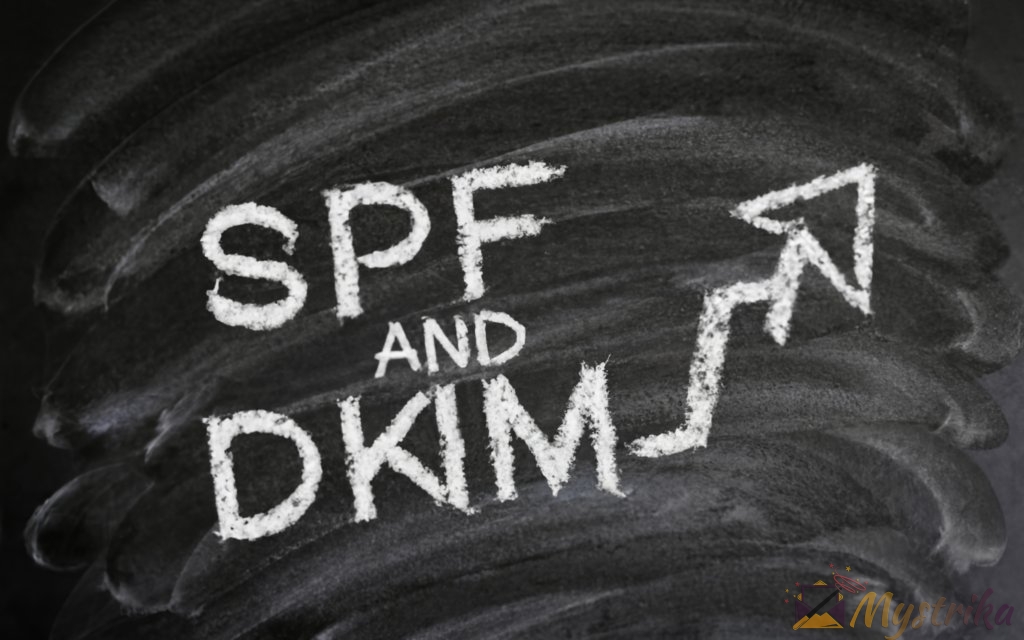But don’t panic! This comprehensive guide arms you with the knowledge to troubleshoot and resolve the most common SPF and DKIM authentication failures. Learn how to fix invalid syntax, optimize policies, align DMARC, decode signatures, and monitor results. With the right techniques, you can reinforce your email security and return to the inbox. Let’s dive in!
Understanding SPF and DKIM Authentication
Email authentication protocols like SPF and DKIM are crucially important for ensuring your messages reliably reach the intended recipient’s inbox. When authentication fails, emails are often erroneously flagged as spam or phishing attempts. Let’s start by understanding how SPF and DKIM work to authenticate your mail.
What is SPF Authentication and How Does it Work?
SPF (Sender Policy Framework) is an email validation system that prevents unauthorized use of email domains in spamming or phishing attacks.
Here’s how it works:
The domain owner publishes an SPF record in their DNS specifying which servers are allowed to send emails on their behalf. This record contains designated IP addresses and hostnames.
When an email is received from that domain, the receiving mail server looks up the SPF record and checks that the sending IP matches.
If the IP is authorized in the SPF record, the mail passes the SPF check. If not, it fails and may be flagged as spam.
For example, an SPF record for example.com may look like this:
v=spf1 ip4:192.0.2.10 ip4:198.51.100.179 include:spf.example.com -allThis authorizes the IPs 192.0.2.10 and 198.51.100.179 as well as all IPs specified in the domain spf.example.com.
The -all mechanism specifies that unlisted IPs fail the check. Other options like ~all softfail or ?all neutral can be used instead.
With SPF in place, only your designated mail servers can send out emails claiming to be from your domain. Spoofed or forged emails from unauthorized sources will fail SPF and be blocked or flagged as suspicious.
What is DKIM Authentication and How Does it Work?
DKIM (DomainKeys Identified Mail) is another email authentication protocol using cryptographic signatures to validate message integrity.
Here are the key steps in DKIM authentication:
- The sender selects certain email headers and body to sign with a private key.
- These selected contents are hashed and encrypted with the private key to generate a DKIM signature.
- The signature is added to the email header as a DKIM-Signature field.
- The public key is published in the sender’s DNS as a TXT record.
- On receipt, the public key is retrieved from DNS and used to decrypt the signature.
- The decrypted hash is compared to a newly calculated hash of the signed content.
- If they match, the email has not been altered and the signature is validated.
For instance, an email from example.com may contain this signature field:
DKIM-Signature: v=1;
s=selector1;
d=example.com
h=from:to:subject;
bh=MTIzNDU2Nzg5MDEyMzQ1Njc4OTAxMjM0NTY3ODkwMTI=;This indicates the signing domain, selector, headers included, and encrypted hash. The recipient gets the public key from selector1._domainkey.example.com to verify the hash and signature.
With DKIM, tampering of signed fields or message content can be detected. Additionally, only authorized senders possessing the private key can create valid signatures for your domain. This prevents spoofing and forgery.
Why are SPF and DKIM Important for Email Deliverability?
SPF and DKIM serve complementary purposes in email authentication and security:
- SPF validates the source IP address that the email originated from.
- DKIM verifies the domain and content integrity of the message itself.
Properly implemented, SPF and DKIM can dramatically improve email deliverability and inbox placement.
Here are some key benefits of getting SPF and DKIM right:
- Stopping spoofing: SPF and DKIM prevent spammers from forging your domain in the envelope sender (SPF) or From header (DKIM). This protects your brand reputation.
- Inbox placement: Emails that fail SPF or DKIM checks are more likely to be flagged as spam or phishing attempts. Valid authentication helps land your mail in the inbox.
- Improved sender reputation: Consistently passing authentication builds sending reputation with major ISPs like Gmail, Outlook, and Yahoo. They’ll be less likely to block future emails.
- Access to detailed reports: SPF and DKIM allow you to request aggregated and forensic authentication reports from receivers. This provides visibility into issues.
- Compliance with standards: Implementing SPF and DKIM brings your email infrastructure up to date with established email security standards.
In summary, SPF and DKIM are the foundation of modern email authentication. Taking the time to properly set up and troubleshoot these protocols will pay dividends through better inboxing and deliverability.

Fixing SPF Authentication Failures
SPF authentication failures can occur for a variety of reasons – incorrect records, syntax errors, excessive DNS lookups, and more. Here are some tips on troubleshooting and correcting common SPF failures.
Creating a Valid SPF Record
The first step is making sure you have a valid SPF record published in your domain’s DNS.
An SPF record specifies authorized servers and includes these key components:
v=spf1– Identifies SPF versionip4andip6– Whitelisted IP addressesinclude– Authorized 3rd party sender domainsall– Specifies overall pass/fail policy
For example:
v=spf1 ip4:192.0.2.10 ip4:198.51.100.179 include:spf.example.com -allSome key tips:
- Only have one SPF record per domain
- Use the latest
v=spf1version - For multiple IPs, specify each
ip4orip6separately - Watch out for typos and syntax errors
- End with only one
allmechanism (-all, ~all, ?all, or +all)
Use SPF record generators to simplify creation.
Choosing the Right SPF Qualifier: -all vs ~all vs ?all
The all mechanism at the end of an SPF record specifies the overall pass/fail policy.
You have several qualifier options:
-all– Fail,Unauthorized IPs will cause recipient reject~all– Softfail, Unauthorized IPs flagged as suspicious?all– Neutral, No policy specified+all– Pass, Not recommended, allows any IP
We recommend ~all softfail as a starting point. This tags unauthorized senders but still accepts the email.
Hard failing with -all often leads to excessive false positives blocking legitimate mail. Save -all for high-risk domains.
Optimizing Long SPF Records to Avoid PermError
SPF records with excessive DNS lookups can hit lookup limits, causing a PermError permanent error.
To optimize:
- Consolidate IP ranges: Use subnet masks like
ip4:192.0.2.0/24rather than listing individual IPs - Aggregate includes: Combine multiple included domains into a single include entry like include:spf.example.com
- Flatten nested includes: Replace chains of nested includes with the expanded entries
- Reduce unnecessary includes: Audit includes and remove any outdated or unnecessary ones
- Split into multiple SPF entries: Publish the first at your domain, then create delegates like spf2.example.com
With these steps, you can reduce total DNS lookups under the limit of 10 for most major mail services.
Correct Use of Include, A, MX Mechanisms
Some SPF mechanisms are implemented incorrectly, leading to failed checks:
- include – Only use for legitimate 3rd party sending domains. Do not include your own domain.
- a – Lists IPs of your A records. But may cause PermError. Not recommended.
- mx – Matches IPs of your MX records. But mail rarely comes from MX IPs directly. Avoid using.
Instead, list authorized IPs explicitly with ip4 and ip6. Also aggregate includes when possible.
Testing and Troubleshooting SPF Records
When correcting SPF issues, use these tips to test and validate your fixes:
- Use SPF validation tools to catch syntax errors before publishing
- After publishing, verify your SPF record is publicly accessible in DNS lookups
- Send test emails from both authorized and unauthorized IP addresses
- Check authentication results in email headers and quarantine
- Request SPF aggregate reports from major receivers to identify alignment issues
- Adjust your SPF record gradually based on aggregated data before enforcing fail
With careful testing and analysis of SPF authentication results, you can dial in a policy that blocks unwanted mail while allowing your legitimate emails through.

Common Reasons for DKIM Authentication Failure
DKIM authentication seems deceptively simple, but there are some common pitfalls that can disrupt validation and cause DKIM failures. Let’s look at some typical causes.
Missing or Invalid DKIM Record
For starters, DKIM authentication requires having a valid published DKIM record.
Common issues include:
- No DKIM record set up at all for your domain
- Publishing the DKIM record in the wrong place, like at the parent domain
- Syntax errors in the DKIM record, e.g. incorrect selector naming
- Failure to use the required
TXTrecord type for the DKIM entry - Configuring the DKIM record with the wrong domain name
Always double check that your DKIM record is formatted correctly and published under the proper _domainkey subdomain. Refer to DKIM documentation from your email provider if in doubt.
Invalid DKIM Selector or Domain Name
The DKIM s= selector and d= domain name need to match the email’s signature:
- The selector in the DKIM-Signature header must match the published record under
_domainkey. - The domain in the signature must match the sending domain in the email’s From header.
If these don’t line up, authentication will fail. Use unique selectors for subdomains, and ensure consistency between published records and email headers.
Use of Expired or Wrong DKIM Public Key
The public key published in DNS is used to validate the email’s DKIM signature. Issues may arise if:
- The public key has expired and been removed, but old emails are still referencing it. Re-sign emails with the new key.
- The email’s signature was created using a different private key than what the public key corresponds to. Keep keys synchronized.
- The wrong public key is returned during lookup. Could be a DNS issue. Review your published records.
Rotate DKIM keys periodically for security. But ensure the new public key is available in DNS before the old one expires.
Changes to Signed Header Fields
DKIM only protects the specific headers and content that were signed by the original sender. Some examples of changes that break a DKIM signature:
- Sending server adds a header, like an X-Header with tracking data
- Recipient’s mail client modifies the Subject when threading the email
- Mail forwarding service prepends content above the original signed body
- Spam filter inserts spam score headers into the message
- DMARC alignment adds or modifies From header with original domain
To avoid issues, sign essential fields only and keep bodies intact. Alternatively, sign the whole message including body to protect contents end-to-end.
Carefully evaluate any processing between sending and receipt that could alter signed contents. Either preserve signatures or resign after changes.

Fixing DKIM Authentication Failures
If you’re dealing with DKIM authentication failures, there are several troubleshooting steps you can take to get a valid signature in place. Let’s go through best practices for setting up DKIM properly and resolving issues.
Setting up a Valid DKIM Record
First, confirm that you have a valid DKIM TXT record published in DNS.
Here are the key elements of a DKIM record:
- Published under subdomain – e.g.
selector._domainkey.example.com - TXT record type
- v=DKIM1 – identifies DKIM version
- Public key published in Base64 encoded format
For instance:
selector._domainkey.example.com IN TXT
"v=DKIM1; k=rsa; p=MIIBIjANBgkqhkiG9w0BAQEFAAOCAQ8AMIIBCgKCAQEAvt9kNxc2iYOQtXKJ8pUUKaA2W1eMF06C+F5FygV9PcHoZ+SEp7bbswcdKWrJxtPvP2EFQ7WW110jUDXGrrbUzsFgrUP+3FyS+DjnG0hS4mSe4fo6g3MQ/ek3KsZdclc5u6yIavjTwLMLdEoFjH1TwLaHbvkiGKoUvHSWXzA+pOdxDhXtyXNIHNgQDSGyB3nRL+Q2+WD1nZibAnPzjPengTp9S+78uOa5b1nz3XexaE7OoTBy4jbPVYyW7kucuExGF2nA0NETIkHv75bFoXsjBepjKg3nPfnEyfm/mpICwLd/orqRwdzR6+tK+yZBFuOQ6M+O7q+NA6g+FAY68R5YnqZQIDAQAB"Some key tips:
- Only have one DKIM TXT record per subdomain/selector
- Use a unique selector like
emailordkimfor each domain - Generate a new 2048+ bit RSA key pair for each selector
- Keep keys synchronized on sending infrastructure to sign email
- Periodically rotate keys and update public keys in DNS
Use DKIM generators to simplify setup.
Choosing the Right DKIM Selector and Domain
The DKIM selector and domain name should accurately reflect the email contents:
- The selector in the email’s DKIM-Signature should match your published DNS record.
- The domain in the signature should match the sender domain in the From header.
For example, if you publish a record at:
email._domainkey.example.com IN TXT (DKIM public key) Then emails sent as [email protected] should contain a signature with:
DKIM-Signature: ... d=example.com s=email ...This ensures the domain and selector align so checks pass.
Use subdomains and distinct selectors if sending from multiple domains and inboxes.
Using the Correct Public and Private Keys
The public and private keys used for signing must correspond to each other:
- The private key signs the email contents and generates the signature.
- The matching public key is placed in DNS to validate the signature.
If these keys mismatch, authentication will fail.
Watch out for:
- Private key changes on email servers without public key updates in DNS
- DNS typos providing the wrong public key for validation
- Key rotation failing to propagate new public key before old one expires
Always double check that both sides – signing and verification – have the proper key pair in use.
Locking Down DKIM Signed Header Fields
DKIM only protects the specific headers included in the h= tag during signing:
h=From:To:SubjectAny non-signed fields that get modified in transit will break the signature.
Some tips:
- At minimum, always sign the From header to prevent spoofing.
- If possible, sign the entire message including the body for full protection.
- For bulk mailings, try to prevent additions like X-Headers with unique IDs.
- Forwarded mail often adds content above the body, invalidating the DKIM.
Evaluate where in your email workflow signed headers could get altered and minimize modifications to only required changes.
Testing and Debugging DKIM Authentication Issues
When troubleshooting DKIM, you can take several steps to test configurations and pinpoint problems:
- Use DKIM validators to confirm records before changing DNS
- Check email headers and traffic logs for specific DKIM failure reason codes
- Lookup public keys in DNS to isolate key problems
- Try decoding DKIM signatures to inspect contents
- Enable debug logging on your email server and watch the DKIM signing process
- Request DKIM aggregate reports from large receivers to uncover issues
- Make incremental changes to DKIM setup based on debug results before enforcing
Proper DKIM authentication is vital for email security and deliverability. Take a systematic approach to eliminating failures by verifying configurations, keys, headers, signatures, and DNS records.

SPF and DKIM Misalignments Causing DMARC Failures
DMARC builds on the authentication performed by SPF and DKIM. If the results of these underlying protocols don’t align, DMARC failures can occur even when SPF and DKIM are valid individually.
What is DMARC and How Does it Use SPF and DKIM?
DMARC (Domain-based Message Authentication, Reporting and Conformance) is an email authentication standard that uses SPF and DKIM to prevent spoofing.
Here’s how DMARC works:
- The domain owner publishes a DMARC DNS record specifying their policy.
- On receipt, the email is checked against SPF and DKIM records.
- The SPF and DKIM results are then evaluated against the DMARC policy.
- If neither SPF nor DKIM pass alignment checks, the DMARC aggregate report shows a failure.
For instance, a DMARC policy of p=reject means emails that fail both SPF and DKIM alignment should be rejected.
How SPF vs DKIM Misalignments Cause DMARC Failure
There are a few ways legitimate emails can fail DMARC due to SPF and DKIM misalignment:
- The SPF record lists sending IP 1.2.3.4, but the DKIM domain is example.com. The domains don’t match.
- The DKIM signature includes a selector that doesn’t align with any published record.
- The email passes DKIM but fails the SPF check because the source IP wasn’t authorized.
- SPF passes for the envelope sender but the DKIM domain differs from the header From address.
In each case, the domains, senders, or selectors for SPF and DKIM don’t correspond as DMARC expects. Even though one passes, the mismatch causes DMARC failure.
Tips to Align SPF and DKIM with DMARC Policy
Here are some tips to align SPF and DKIM results and avoid DMARC failures:
- Use the same domain name for SPF records and DKIM signatures.
- Publish DKIM records for every sending domain and selector.
- Include all valid source IPs in the SPF records.
- Ensure selectors in signatures match DNS published records.
- Avoid SPF and DKIM mismatches when forwarding or altering emails.
- Analyze DMARC aggregate reports to detect alignment issues.
- Start with a DMARC policy of
p=nonewhile debugging issues. - Adopt a monitor/enforce rollout approach before blocking mail.
Some specific steps that help:
- Publish a subdomain like
mail.example.comin SPF and use for DKIM too. - Authenticate bounce notices and replies with SPF and DKIM.
- Sign key headers like From, Reply-To for core domains.
- Send traffic from dedicated IPs listed in SPF.
With consistent domains, selectors, and IPs in both SPF and DKIM configurations, you can achieve DMARC alignment and prevent authentication bypass attacks.
Troubleshooting Authentication Issues for Specific Email Services
In addition to general troubleshooting, you may need to take specific steps to fix authentication problems when using major email providers and services. Let’s look at how to resolve common SPF, DKIM, and DMARC errors for some popular platforms.
Fixing Zendesk SPF, DKIM and DMARC Errors
Zendesk is a popular cloud-based customer service software. Here are some tips for authenticating Zendesk emails:
SPF
- Add
include:mail.zendesk.comto your SPF record. - Use their SPF validation tool to troubleshoot failures.
- Make sure to publish the SPF record at your root domain.
DKIM
- Follow their steps to generate CNAME records for DKIM.
- Enable DKIM signing under Email Channels in your Zendesk dashboard.
- Check DKIM selectors –
zendesk1andzendesk2should work.
DMARC
- Use From addresses that match your DKIM signing domain.
- Ensure SPF and DKIM domains align with your DMARC policy domain.
- Start with
p=nonepolicy and monitor to identify mismatches.
Troubleshooting Gmail Authentication Errors
For Gmail and Google Workspace accounts, check these areas:
SPF
- Add
include:_spf.google.comto authorize Google servers. - Use Gmail’s SPF tool to validate your record.
- Verify the SPF record is published at your custom domain, not with Google domains.
DKIM
- Check Google’s admin console that their DKIM CNAME records are properly configured.
- Make sure custom DKIM selectors match published Google selectors starting with
g. - Use From addresses matching your custom domain, not
@gmail.com.
DMARC
- Set a subdomain like
mail.yourdomain.comin SPF and DKIM to align with your DMARC policy domain. - Start with
p=noneand monitor alignment before enforcing. - Check DMARC aggregate reports for failures and work to correct mismatches.
Debugging Outlook.com SPF and DKIM Failures
Outlook.com has its own unique setup:
SPF
- Add
include:spf.protection.outlook.comto authorize Outlook servers. - Use custom From addresses that match your domain’s SPF record.
- Publish your SPF record directly in your own DNS, not the Outlook SPF editor.
DKIM
- Microsoft manages DKIM automatically for
@outlook.comaddresses. - For custom domains, follow Microsoft’s DKIM setup guides.
- Ensure your DKIM selector begins with
selector1.
Resolving Authentication Problems for Other Providers
For SMTP providers, marketing platforms, CRMs, and other services that send emails on your behalf:
- Check their documentation for the correct SPF entries and DKIM selectors.
- Follow their specific instructions to enable DKIM signing and generate DNS records.
- If authenticating transactional email, use a subdomain like mail.yourdomain.com for consistency.
- For bulk mailing, try to isolate dedicated IPs and SPF/DKIM infrastructure.
- Request aggregate DMARC reports to identify any mismatches.
- Temporarily use
p=nonepolicy while testing and migrating providers.
Whether you’re troubleshooting Gmail, Zendesk, Outlook, or any other email platforms, understanding their specific DKIM and SPF setup steps is crucial for configuring valid authentication and achieving DMARC alignment.

Best Practices for Long-Term Email Authentication Success
Troubleshooting and debugging SPF, DKIM, and DMARC issues is just the beginning. To sustain email authentication and prevent future failures, you should follow security best practices and adopt ongoing maintenance processes.
Regularly Monitoring and Testing SPF, DKIM and DMARC
Set up proactive monitoring to catch authentication problems before they disrupt email:
- Use email authentication tools to continuously validate your SPF, DKIM, and DMARC records.
- Configure real-time alerts when issues are detected with your configurations.
- Request aggregate reports from major ISPs to identify fail rates and policy mismatches.
- Subscribe to forensic reports for actionable details on incidents causing failures.
- Import reports into dashboards for tracking trends and metrics over time.
- Generate test emails to evaluate authentication and DMARC policy enforcement.
Staying on top of potential issues lets you respond quickly and prevent deliverability impacts.
Setting up Dedicated Authentication Infrastructure
Rather than ad hoc configurations per domain or mailbox, establish dedicated infrastructure:
- Publish SPF records referencing chosen outbound IPs and domains.
- Generate DKIM selectors, keys, and DNS records for core sending domains.
- Select DMARC policy hosts aligned with SPF and DKIM domains.
- Configure DMARC aggregate and forensic reporting to reporting hosts.
- Segment transactional, marketing, and customer communication streams.
- Allocate fixed IP ranges for each email type and sync to SPF.
- Isolate authentication infrastructure from risks like IP blacklists.
With purpose-built SPF, DKIM, and DMARC specifically optimized for your requirements, you gain control over email authentication.
Optimizing Authentication for Each Email Source
Take a layered approach optimizing SPF, DKIM, and DMARC for each email origin:
- Internal email – Authenticate using domain SPF records and DKIM selectors. Apply DMARC at your organizational domain.
- Cloud email services – Follow provider guidelines for granting send access in SPF and enabling DKIM signing.
- ISP-hosted mail – Use subdomain delegation with SPF and DKIM to isolate from primary domains. Implement custom DMARC policy.
- Mail forwarding – Resign emails after forwarding with consistent SPF/DKIM selectors. Update DMARC policy domain as needed.
- Marketing channels – Utilize service-provided selectors and IPs. Check DMARC alignment before enforcing policies.
Fine tuning authentication for each source improves consistency, while accommodating necessary differences in email infrastructure.
Using Authentication Tools and Services
Consider leveraging commercial tools and services to simplify managing SPF, DKIM, and DMARC:
Setup Wizards
Guided tools to generate valid SPF, DKIM, and DMARC records customized for your configuration.
Monitoring
Ongoing validation of published records, alerting on issues, and aggregate report analysis.
Troubleshooting
Experts that help diagnose your specific SPF, DKIM, and DMARC failures and fix the underlying cause.
Managed Authentication
Fully handled configuration maintenance, rotations, troubleshooting, and reporting for SPF, DKIM, and DMARC.
Depending on your needs, choose the level of automation and expertise that provides the most value long-term.
Reliable email authentication requires vigilance. A combination of disciplined best practices, purpose-built infrastructure, and automation tools can help tame the complexity.

Key Takeaways
Properly configuring SPF, DKIM, and DMARC for bulletproof email authentication can seem daunting.
But by methodically addressing common causes of failures, making fixes step-by-step, and adopting ongoing best practices, you can overcome challenges that arise.
Key lessons to learn are:
- Start by ensuring fundamental syntax and configuration issues are not causing SPF and DKIM failures.
- Optimize and test your policies – don’t jump straight to enforcing without a plan.
- Monitor authentication results and aggregate reports continuously to detect issues.
- Support diverse email sources by planning infrastructure and using subdomains.
- Achieve DMARC alignment by coordinating SPF and DKIM domains and selectors.
- Seek help from specialists when needed to troubleshoot and optimize configurations.
Solid email authentication maximizes deliverability to the inbox, nurtures sender reputation, and prevents spoofing. With the right knowledge and tools, you can systematically work through complications and achieve SPF, DKIM, and DMARC success.
Frequently Asked Questions
Q: Why did my email suddenly start failing SPF or DKIM checks?
A: Some common reasons are DNS issues, expired keys, infrastructure changes, or domain mismatches. Review lookup results, check logs, and inspect headers to isolate the cause.
Q: What’s the difference between SPF “fail” and “softfail”?
A: An SPF hard fail means reject the email while softfail means flag it as suspicious but accept. Start with softfail to minimize impact.
Q: My DKIM checks pass but DMARC still fails – why?
A: This is likely a domain alignment issue. Ensure your DKIM domain and SPF aligns with the DMARC policy domain.
Q: How do I troubleshoot transient SPF PermErrors?
A: Lookup the underlying DNS and identify redundant or nested includes. See if you can consolidate your SPF record.
Q: What tools can I use to validate my SPF, DKIM, and DMARC setup?
A: There are free online tools that check record syntax, do lookups, and analyze headers. Paid services provide enhanced monitoring and reporting.
Q: Should I use CNAME or TXT records for DKIM?
A: Always use TXT records for the DKIM public key itself. CNAMEs are only needed to point to a provider’s DKIM server.
Q: What’s the difference between DKIM signatures and keys?
A: The signature is added to the email header. It is encrypted using your private key. The public key is published in DNS for validation.
Q: How do I decode DKIM signature fields?
A: Tools like openSSL or online DKIM decoders unpack the encoded signature. Then you can inspect the contents.
Q: Why don’t IPv6 addresses work in SPF records?
A: You need to use the “ip6” mechanism prefix like “ip6:2001:db8::1” for IPv6 addresses to be processed correctly.
Q: How long does it take for DNS changes to propagate?
A: Plan on up to 48 hours for universal DNS propagation. But most major resolvers will see changes within an hour.

